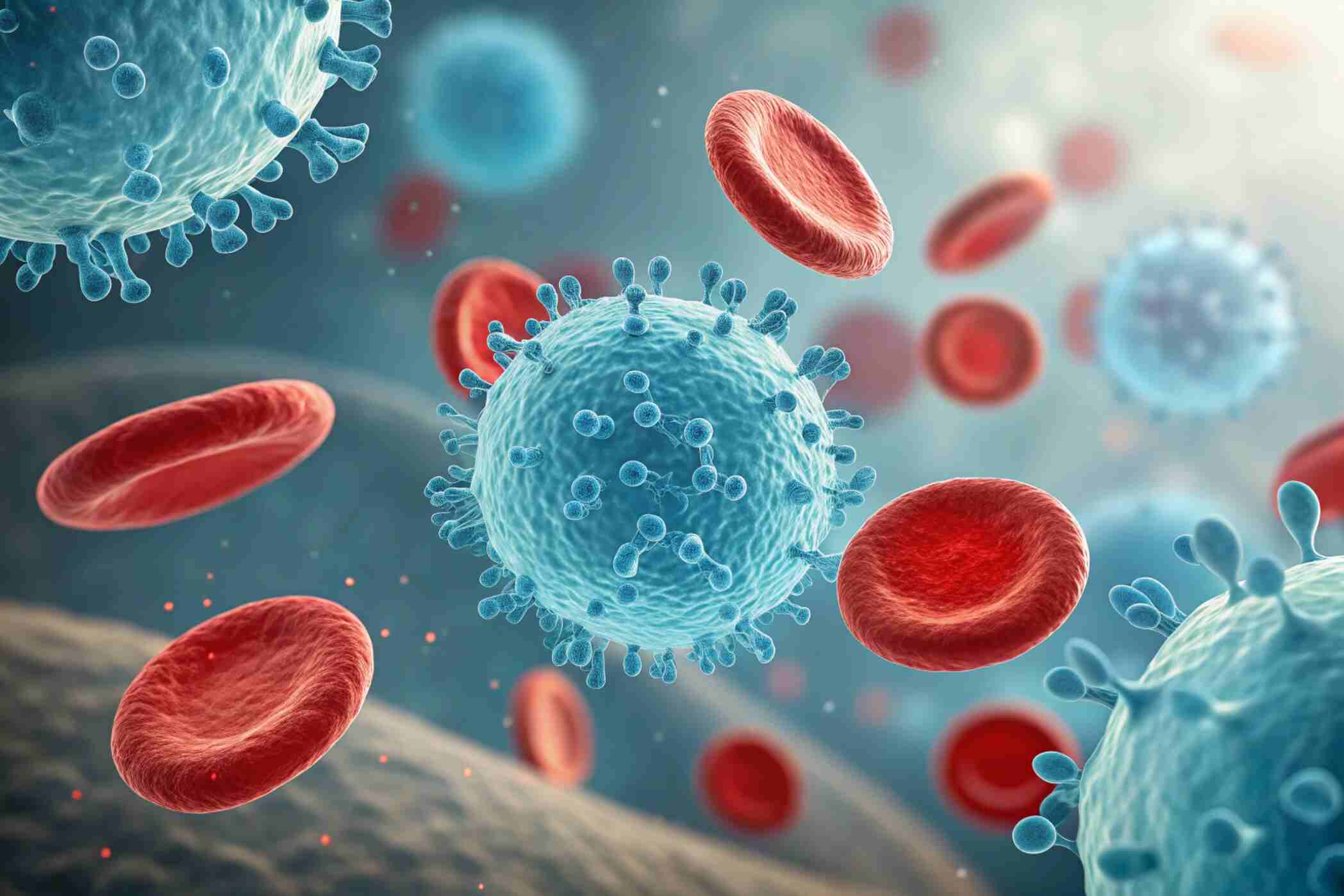Origin Of Glastnads Disease – Origin, Symptoms, Cure!
Understanding the origin of Glanzmann’s disease is more than an academic pursuit—it’s a gateway to better diagnosis, innovative treatments, and personalized care. As a rare inherited bleeding disorder, Glanzmann’s disease offers insights into platelet function, genetic inheritance, and the impact of molecular medicine on modern healthcare.
Studying the disease’s genetic and historical origin empowers researchers, physicians, and affected families to navigate its complexity, tackle its challenges, and contribute to future discoveries that may lead to a cure.
Who First Discovered Glanzmann’s Disease and How?
The history of Glanzmann’s disease dates back to 1918, when Swiss pediatrician Eduard Glanzmann encountered a group of children experiencing unusual bleeding despite having a normal number of platelets. His groundbreaking research identified a new kind of bleeding disorder, not due to platelet count but due to a platelet function defect.
He described this disorder as hereditary hemorrhagic thrombasthenia, now known as Glanzmann’s thrombasthenia. This was the first time platelet aggregation defects were recognized as a distinct category of bleeding disorder.
What Exactly is Glanzmann’s Disease?
Glanzmann’s disease is a genetically inherited platelet function disorder. People with this condition have normal platelet counts, but the platelets don’t work correctly. This is because of a malfunction in the glycoprotein IIb/IIIa complex, which helps platelets stick together to form clots and stop bleeding.
As a result, affected individuals bleed more easily and for longer periods, even from minor injuries. The condition can range from mild to severe, and symptoms often begin in early childhood.
Which Genes Are Responsible for Glanzmann’s Disease?
The root of Glanzmann’s disease lies in mutations of two specific genes:
- ITGA2B
- ITGB3
These genes are responsible for creating the glycoprotein IIb/IIIa complex on platelets. When a mutation occurs in either gene, the platelets can’t form strong clots, leading to prolonged bleeding episodes.
Each parent of an affected person typically carries one mutated copy of one of these genes, making them asymptomatic carriers.
How is Glanzmann’s Disease Inherited?
The disorder follows an autosomal recessive inheritance pattern. This means that a child needs to inherit a mutated gene from both parents to develop the disease. Here’s how the chances break down:
- 25% chance the child will be affected
- 50% chance the child will be a carrier
- 25% chance the child will inherit two normal genes
Carriers usually don’t show symptoms but can still pass the gene to their children. That’s why genetic counseling plays a big role in families with a history of the disease.
What Happens to the Platelets in Glanzmann’s Disease?
In Glanzmann’s disease, platelets lack functional glycoprotein IIb/IIIa receptors, preventing them from binding to fibrinogen. As a result, they cannot clump together to form proper blood clots. This leads to weak or incomplete clot formation and causes frequent or spontaneous bleeding, especially in the nose, gums, and gastrointestinal tract.
Although the platelet count remains normal, their impaired function makes even minor injuries risky. Patients may experience prolonged bleeding after dental work or surgery. Heavy menstrual bleeding is common in women. Bruising easily without apparent cause is also typical. These platelet defects are present from birth due to inherited genetic mutations.
Are There Different Types of Mutations That Cause the Disease?
Yes, Glanzmann’s disease is caused by a wide range of mutations in the ITGA2B and ITGB3 genes. Here are five main types of mutations, each affecting platelet function differently:
- Missense Mutations: These mutations result from a single amino acid change in the glycoprotein structure. Although the protein may still be produced, its shape or function is altered, weakening its ability to bind fibrinogen and impairing platelet aggregation during the clotting process.
- Nonsense Mutations: A nonsense mutation introduces a premature stop codon in the gene sequence, halting protein production early. This leads to incomplete or non-functional glycoproteins, significantly disrupting the platelet’s ability to form stable blood clots.
- Splice Site Mutations: These mutations affect the way RNA is processed after transcription, often causing incorrect or incomplete protein formation. As a result, glycoprotein IIb/IIIa may be missing or structurally defective, limiting platelet response during bleeding.
- Frameshift Mutations: Caused by small insertions or deletions in the gene, frameshift mutations change the entire reading frame of the genetic code. This leads to the production of dysfunctional proteins or a complete absence of the required glycoprotein complex.
- Large Deletions or Complex Rearrangements: In some cases, larger portions of DNA are missing or rearranged within the gene. These mutations can eliminate gene function, resulting in a total absence of glycoprotein IIb/IIIa, often leading to the most severe form of Glanzmann’s disease.
Is Glanzmann’s Disease More Common in Certain Populations?
Glanzmann’s disease is more frequently observed in populations with high rates of consanguinity, such as in Middle Eastern, South Asian, Jewish, and Gypsy communities. Marriages among relatives increase the likelihood of inheriting two mutated genes, leading to a higher prevalence of the disorder due to genetic bottlenecks within these populations.
In such regions, awareness and access to genetic counseling are often limited. This makes early diagnosis and prevention more challenging. Community health programs focusing on education can help reduce transmission risks in future generations.
Why Does the Severity of the Disease Vary Between Patients?
The severity of Glanzmann’s disease can differ widely from one person to another due to several key factors:
- Type of Genetic Mutation: Different mutations in the ITGA2B or ITGB3 genes affect protein production and function in various ways, leading to mild, moderate, or severe disease presentations depending on the mutation’s impact.
- Production of Functional Glycoprotein: Some mutations allow for partial production of functional glycoprotein IIb/IIIa, which may support limited platelet aggregation and reduce bleeding severity compared to complete glycoprotein absence.
- Antibodies from Repeated Transfusions: Patients who receive frequent platelet transfusions may develop antibodies against donor platelets (alloimmunization), making future treatments less effective and increasing bleeding risks.
- Influence of Modifying Genes: Other genes in the patient’s genome can influence how the disease manifests. These modifier genes may either worsen or lessen the clinical symptoms based on individual genetic backgrounds.
- Environmental and Epigenetic Factors: Lifestyle, diet, infections, medications, or stress may alter gene expression or clotting responses, further affecting how often or severely a person experiences bleeding episodes.
Can Glanzmann’s Disease Be Diagnosed Early?
Yes, Glanzmann’s disease can be diagnosed early, especially when symptoms like frequent nosebleeds, unexplained bruising, or prolonged bleeding appear in childhood. Diagnosis begins with a detailed medical and family history, followed by specialized blood tests to assess platelet function, such as bleeding time and platelet aggregation studies.
Flow cytometry is used to confirm the absence or defect of glycoprotein IIb/IIIa on platelets. Finally, genetic testing helps identify the specific mutation. Early diagnosis is crucial for effective management, especially before planned surgeries, dental work, or in prenatal counseling for high-risk families.
Is Glanzmann’s Disease Similar to Other Bleeding Disorders?
While it shares symptoms with conditions like hemophilia or von Willebrand disease, Glanzmann’s has distinct features:
| Condition | Cause | Platelet Count | Clotting Factors | Inheritance |
| Glanzmann’s Disease | Platelet function defect | Normal | Normal | Autosomal recessive |
| Hemophilia A/B | Clotting factor VIII or IX | Normal | Deficient | X-linked recessive |
| Von Willebrand Disease | vWF deficiency/dysfunction | Normal or low | vWF related | Autosomal dominant/recessive |
Correct diagnosis is crucial because treatment differs significantly for each.
What Are the Treatment Options Available Today?
Although Glanzmann’s disease has no universal cure, several treatment options help manage bleeding and improve quality of life:
- Platelet Transfusions: Used during surgeries or severe bleeding episodes to temporarily provide functional platelets that aid in clot formation, though repeated use can lead to alloimmunization.
- Antifibrinolytic Drugs: Medications like tranexamic acid help stabilize clots by preventing their breakdown, making them especially useful for controlling mucosal bleeding, such as nosebleeds or menstrual bleeding.
- Recombinant Factor VIIa (rFVIIa): This synthetic clotting factor activates the coagulation cascade and is often effective in patients who have developed resistance to platelet transfusions.
- Bone Marrow Transplant: Offers a potential cure by replacing defective stem cells with healthy donor cells, but is reserved for severe cases due to high risks and complications.
- Supportive Care and Monitoring: Regular check-ups, bleeding prevention strategies, and personalized treatment plans are essential for reducing complications and maintaining day-to-day well-being.
Can Genetic Counseling Help Prevent Glanzmann’s Disease?
Yes, genetic counseling plays a crucial role in preventing the transmission of Glanzmann’s disease, especially in high-risk families. It is strongly advised for those with a family history of the disorder, couples from communities where consanguineous marriages are common, and individuals planning assisted reproduction. Through carrier screening, parents can understand their genetic risks.
Options such as prenatal diagnosis and preimplantation genetic diagnosis (PGD) during IVF allow the selection of embryos free from the mutation. By making informed reproductive choices, families can significantly reduce the chances of passing on Glanzmann’s disease to their children.
What is Life Like for Someone Living with Glanzmann’s Disease?
Living with Glanzmann’s disease involves careful daily management to reduce bleeding risks. Here are key lifestyle adjustments:
- Avoiding High-Impact Activities: Patients are advised to stay away from contact sports or activities that increase the risk of injury and internal bleeding.
- Maintaining Good Oral Hygiene: Gentle brushing and regular dental care help prevent gum bleeding, a common symptom of the disorder.
- Wearing Medical Alert Identification: Medical bracelets or ID cards inform healthcare providers of the condition in emergencies, ensuring proper and timely care.
- Keeping Emergency Medications Nearby: Having access to treatments like rFVIIa or antifibrinolytics is important for managing sudden bleeding episodes quickly.
- Living a Balanced and Monitored Lifestyle: With the right precautions, many individuals with Glanzmann’s disease lead active, fulfilling lives, supported by regular checkups and a strong healthcare plan.
How Can Policy and Public Awareness Improve Outcomes?
Glanzmann’s disease is often overlooked in public health discussions due to its rarity, which can delay diagnosis and limit access to proper care. Improving outcomes starts with including the condition in national rare disease policies, ensuring early detection and long-term management. Insurance coverage for advanced treatments like recombinant therapies and bone marrow transplants is essential to ease the financial burden on families.
Expanding the training of hematology specialists and promoting collaboration between governments, hospitals, and NGOs can improve care infrastructure. Additionally, awareness campaigns help educate communities, reduce stigma, and empower families with the knowledge to seek timely support.
Is Gene Therapy the Future of Glanzmann’s Treatment?
Absolutely. Gene therapy holds great promise for the future of Glanzmann’s disease treatment by addressing the condition at its genetic root. Scientists are working on delivering a healthy copy of the ITGA2B or ITGB3 gene directly into the patient’s bone marrow cells. This approach aims to restore the production of functional glycoprotein IIb/IIIa, enabling platelets to work correctly.
Early-phase clinical trials have shown encouraging results, suggesting the potential for long-term or even permanent relief. If successful, gene therapy could transform care, offering a true cure for Glanzmann’s disease. However, challenges such as safety, delivery efficiency, and immune response management must be overcome. As research advances, gene therapy may become a standard option. It represents hope for patients who currently rely on lifelong symptomatic treatments.
FAQs:
1. Can Glanzmann’s disease skip a generation?
Glanzmann’s disease follows an autosomal recessive inheritance pattern. While it doesn’t “skip” a generation in the traditional sense, carriers (who show no symptoms) can pass the gene silently, and it may appear in a later generation if both parents are carriers.
2. Is Glanzmann’s disease detected in routine blood tests?
No, standard blood tests like a complete blood count (CBC) may appear normal since platelet count is unaffected. Specialized tests such as platelet aggregation studies, flow cytometry, or genetic testing are needed to confirm the diagnosis.
3. Can women with Glanzmann’s disease have a safe pregnancy?
Yes, but pregnancies must be closely monitored. Women with Glanzmann’s disease are at higher risk for bleeding during childbirth and may require a personalized care plan, including access to transfusions or rFVIIa during delivery.
4. Is Glanzmann’s disease contagious or caused by lifestyle?
No, Glanzmann’s disease is not contagious and is not caused by lifestyle choices. It is a genetic disorder present from birth and results from mutations in the ITGA2B or ITGB3 genes.
5. Can children with Glanzmann’s disease attend regular schools and activities?
Yes, with the right precautions. Children should avoid rough physical activities but can participate in most school activities. Teachers and caregivers should be informed about the condition and trained to handle bleeding episodes if needed.
Conclusion:
Understanding the origin of Glanzmann’s disease opens the door to improved diagnosis, better patient management, and future innovations like gene therapy. From its historical discovery to the modern-day treatment approaches and genetic counseling, every detail contributes to more informed and effective care.
Though Glanzmann’s remains a rare condition, awareness, early detection, and personalized treatment can help individuals live full, healthy lives. Continued research and public health support are essential in offering hope for long-term solutions and, ultimately, a cure.
Related post:






